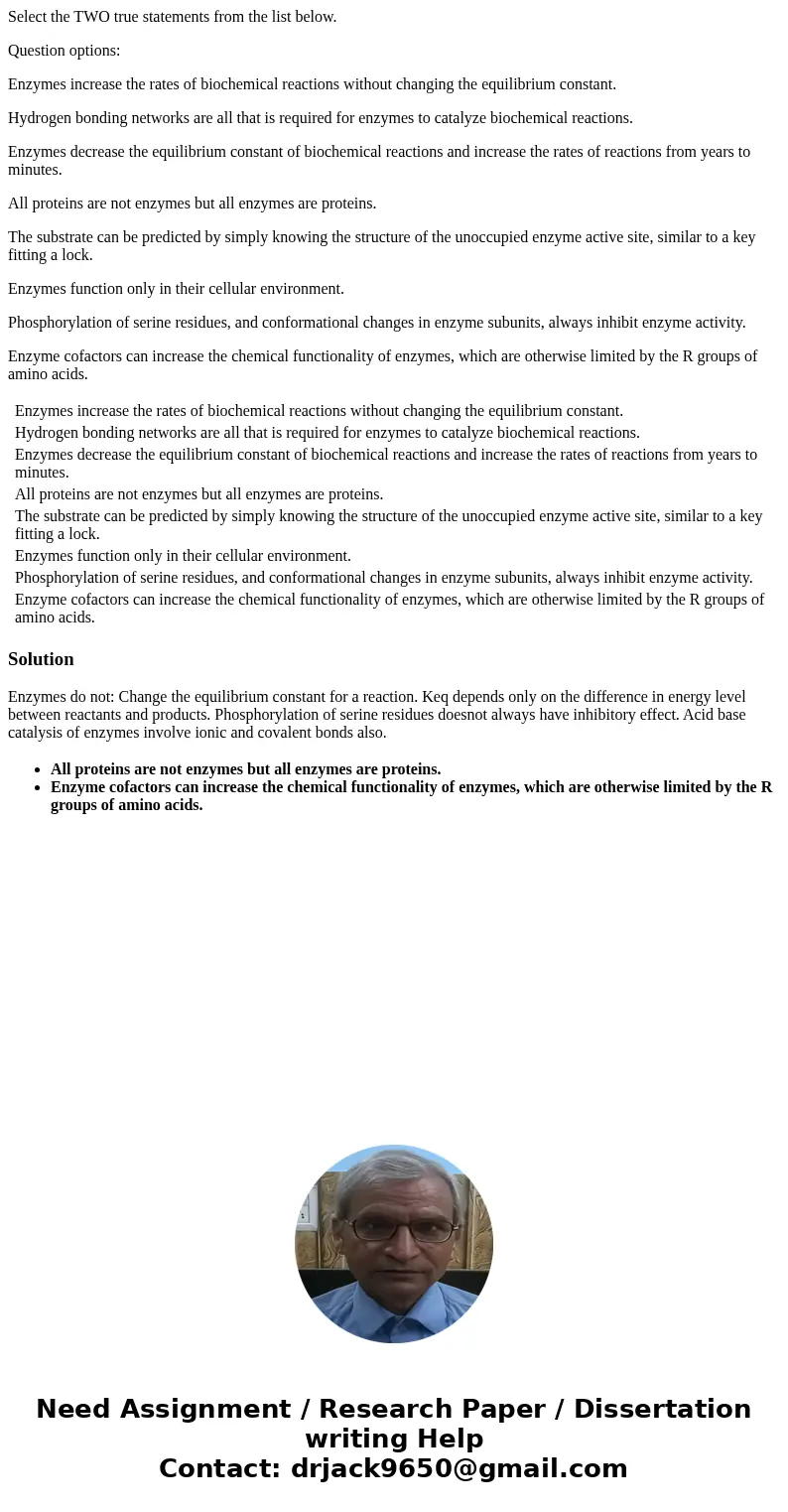Select the TWO true statements from the list below Question
Select the TWO true statements from the list below.
Question options:
Enzymes increase the rates of biochemical reactions without changing the equilibrium constant.
Hydrogen bonding networks are all that is required for enzymes to catalyze biochemical reactions.
Enzymes decrease the equilibrium constant of biochemical reactions and increase the rates of reactions from years to minutes.
All proteins are not enzymes but all enzymes are proteins.
The substrate can be predicted by simply knowing the structure of the unoccupied enzyme active site, similar to a key fitting a lock.
Enzymes function only in their cellular environment.
Phosphorylation of serine residues, and conformational changes in enzyme subunits, always inhibit enzyme activity.
Enzyme cofactors can increase the chemical functionality of enzymes, which are otherwise limited by the R groups of amino acids.
| Enzymes increase the rates of biochemical reactions without changing the equilibrium constant. | |
| Hydrogen bonding networks are all that is required for enzymes to catalyze biochemical reactions. | |
| Enzymes decrease the equilibrium constant of biochemical reactions and increase the rates of reactions from years to minutes. | |
| All proteins are not enzymes but all enzymes are proteins. | |
| The substrate can be predicted by simply knowing the structure of the unoccupied enzyme active site, similar to a key fitting a lock. | |
| Enzymes function only in their cellular environment. | |
| Phosphorylation of serine residues, and conformational changes in enzyme subunits, always inhibit enzyme activity. | |
| Enzyme cofactors can increase the chemical functionality of enzymes, which are otherwise limited by the R groups of amino acids. |
Solution
Enzymes do not: Change the equilibrium constant for a reaction. Keq depends only on the difference in energy level between reactants and products. Phosphorylation of serine residues doesnot always have inhibitory effect. Acid base catalysis of enzymes involve ionic and covalent bonds also.
|

 Homework Sourse
Homework Sourse